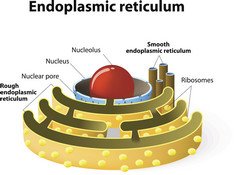Quality control for brain transmitters
Glutamate, the main mammalian stimulatory neurotransmitter, binds to two main types of receptors, one of which is N-methyl-D-aspartate (NMDA). Evidence suggests that abnormal regulation of NMDA receptors (NMDARs) is responsible for neurological disorders such as Parkinson's disease and epilepsy. NMDARs are assembled in the endoplasmic reticulum (ER) and have to pass through ER quality control machinery before transportation to the synaptic membrane. Key in the whole process are the NMDAR sub-units, GluN1 and GluN2. Previous research has shown that regions in GluN1 and GluN2 regulate ER retention and release of functional NMDARs. The project SALMANDNMDA (Elucidating the role of SALMs in the regulation of synapses and NMDA receptors) investigated the molecular mechanisms that regulate the trafficking and assembly of NMDARs before they reach the cell surface membrane and become functional. Studies revealed that ER membrane domains have a unique role in regulating the number of surface NMDARs. Moreover, one particular amino acid residue within the GluN1 M4 domain is critical in the surface delivery of functional NMDARs. It was found that the GluN2C subunit uses several regulatory mechanisms to control their early processing. Researchers also investigated the role of N-glycans in the processing of NMDARs. Nearly every protein that enters the ER lumen is N-glycosylated, and a combination of state-of-the-art techniques — siRNA technology, confocal microscopy and biochemistry — was applied to unravel the importance of N-glycosylation in the integrity and quality of NMDARs. Removal of N-glycans from NMDARs changed their affinity for glutamate, suggesting that neurons use a novel mechanism to ensure that postsynaptic membranes contain sufficient numbers of functional NMDARs. Study outcomes also revealed several lectins that can alter the functional properties of NMDARs. Results provided new insight into how N-glycosylation can regulate the action of glutamate receptors in the central nervous system. Project results promise to increase our understanding of the altered biochemistry in many brain disorders that could lead to individualised therapies. Furthermore, SALMANDNMDA technologies and approaches could be adapted for research into other similar receptors.







